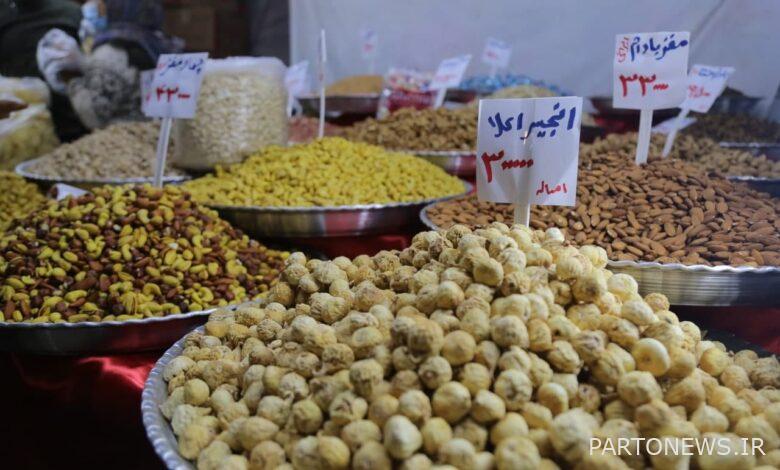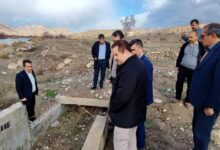The necessity of forming a professional association of souvenirs of the country

Golestan province tourism expert Jafar Khandozi wrote in a note sent to Arya Heritage: As we know, one of the goals that led to the merger of three organizations related to the field of tourism in the country (Cultural Heritage Organization, Handicrafts Organization, Iran Tourism and Tourism Organization) was that the products Handicrafts should be one of the important souvenirs that are bought more by domestic and foreign tourists and in this way domestic economies will prosper. But in the meantime, this point was forgotten over time that these products are only one of the souvenirs of the regions and provinces of the country. So, what will happen to other souvenirs that are produced and offered in all parts of the country and are not handicrafts? Therefore, it seemed very necessary and it still seems that the custodian institution should be able to provide a practical and operational answer to such an important question.
In a simple definition, the Mongolian Turkish word sougat (sauqat, saugat) or rehvard or tohfeh is a product that travelers and tourists buy from a city, village or region or are given as a gift to relatives and friends after returning from a trip. And acquaintances give gifts. Products are usually handicrafts, industrial products and food made in different geographical areas.
The word “souvenir” and “souvenir” in the general term is defined in Persian dictionaries as “guide”, “armaghan”, “gift”, “gift”, and “travel gift”. In the English language, souvenirs are defined with about four equivalents: something bought to help us remember our holidays and special events. In other words, a reminder of memories and what happened during the trip. Therefore, souvenirs usually include “handicrafts, industrial products and food” available and produced in a region or tourist destination.
But before that, the question is, what is the current state of souvenirs? What is happening today is that after the integration of the aforementioned executive bodies together, in the exhibitions and bazaars that were held, along with handicraft products, other products and productions are also offered and sold in the form of “souvenirs”, which is still the current trend. However, from the point of view of tourists, all these products, whether handicrafts or not, are called souvenirs. But the non-handicraft souvenirs include traditional sweets, local breads, traditional drinks and spirits, brews, spices, confections, oils, agricultural products, etc., which are licensed by the Ministry of Cultural Heritage, Tourism and Handicrafts and the production department Or the supply of non-handicraft souvenirs with the ministry of privacy. In this regard, the measures taken by the mentioned ministry in the field of souvenirs are as follows:
1- Granting permission to attend and offer souvenirs in city, provincial or national exhibitions. Non-handicraft souvenirs are the most widely available, especially in festivals, Nowruzgahs, exhibitions and bazaars.
2- Registration of souvenirs in the list of spiritual heritage of the country
3- Special attention to handicraft products as the most important souvenirs of Iranians.
But with all these descriptions and details, the fact is that there is no such thing as a souvenir as a main and serious guardian. And part of executive bodies see souvenir products among different categories and another part uses these products to attract travelers and tourists. While we should pay attention to these products as one of the factors to attract tourists, if this happens, first of all, we will look at the production and supply of souvenirs as a job and as a result, a guild or an independent organization.
Second, we will categorize souvenirs and define production standards for each.
In general, according to the gaps and deficiencies that exist, the situation of producers and suppliers of souvenir products are categorized in the following cases:
1- This group of producers obtains a license from the relevant trade union according to the type of souvenir. For example, producers of food souvenirs from the association of grocery and food vendors, producers of souvenir sweets from the association of confectioners, producers of traditional bread from the union of flour and bread, etc., while producers of handicraft products have both a workshop production license and the necessary license for supply. Stores, online sales, exports, etc., are either independently licensed by the Ministry of Cultural Heritage, Tourism and Handicrafts, or at least assisted.
While each category of souvenir products, at the same time, which has a series of characteristics and industry standards, also has a series of tourism characteristics and standards. This is why handicraft products have special and different management because their conditions and functions are different from other types. There are also souvenir products. For example, in the metropolis of Tehran, people who produce and supply traditional dairy products have a separate guild and organization called “Tehran Traditional Dairy Sellers Union”.
2- At present, in the Ministry of Cultural Heritage, Tourism and Handicrafts, the responsibility of this group of producers and suppliers is not accepted by the Deputy of Tourism, nor the Deputy of Handicrafts. While both vice-chancellors benefit from their existence.
3- The sales and income generation statistics of this group of producers and suppliers are not counted and monitored along with the sales statistics of handicraft products and traditional arts, while both are souvenirs in nature.
4- Due to the imposition of expenses related to the stylish and luxurious packaging of most of these types of products, the manufacturers and suppliers of souvenirs cannot increase the price of souvenirs and must be subject to the pricing of the union or guild from which they have obtained permission. The rating of guilds is mainly determined according to the conditions of the middle classes of the society inside the country.
5- The Riyal cost of granting a license in some guilds is very high, while most souvenirs can be produced in small workshops.
6- Since these products are defined in the field of tourism, they should also have certain standards, for example, products such as Gaz Qom and Sohan of Isfahan have reached the standards of a tourist product, but unfortunately, most of Iran’s souvenirs have not yet reached the level of tourist souvenirs.
Therefore, it is necessary that the Ministry of Cultural Heritage, Tourism and Handicrafts, as the most worthy trustee, as an obligatory and important measure to organize and recognize the producers and suppliers of Iranian souvenir products, enters the pit, along with the professional associations that have been licensed by this ministry and under its supervision. are working, for the first time in the country, to form the “Professional Association of Iranian Souvenirs” by two groups of manufacturers and suppliers of Iranian souvenir products.
This association will try to issue the main license to operate in the field of souvenirs, and if there is a need to comply with certain conditions, the relevant association can be introduced and a supplementary license can be obtained.
In this regard, it is necessary to first hold a conference with the presence of the main or the most famous manufacturers and suppliers of Iranian souvenirs from all the provinces of the country, and the conditions and necessities of the formation of the mentioned association are discussed and examined by the officials of the ministry and the activists of this department, and in the continuation of the establishment instructions. And the way of activity of this association should be prepared and compiled.
end of message/

